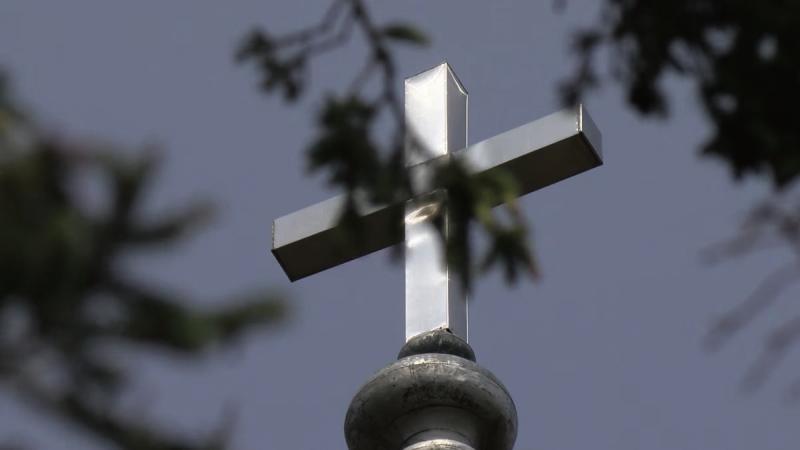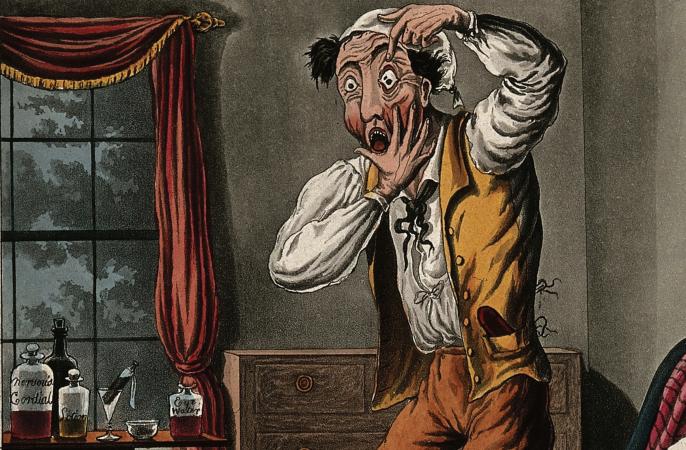Country Living
Cloosh valley fire lifts the lid on our air quality myth

Country Living with Francis Farragher
Having no sooner consoled myself about the intrinsic benefits of breathing in clean West of Ireland air as compared to what one experiences in the mega-cities like Beijing, my little cocoon of comfort was shattered after doing a story last week concerning the air quality levels in Galway, and in particular the city area.
The Cloosh Valley gorse and forest fire in the Connemara region not far from the villages of Oughterard and Moycullen brought the issue into focus, and especially so on the evening of Tuesday, May 9, when around 4pm the wind changed from an easterly to a westerly direction. As a consequence, a plume of smoke was blown towards the city as well as a fair bit of ash, prompting a colleague of mine to describe the atmospheric conditions as resembling grey snow.
In the city, there is now a Citizen Science Air Pollution monitoring station, located at the Jes College on Sea Road, that’s part of a pilot projected being driven by the Physics Department of NUI Galway and the Environmental Protection Agency (EPA).
This station measures our air quality and can subsequently feed information into an Air Quality Index, that’s used all over the world to monitor atmospheric pollution levels and to subsequently warn people of any associated health risks.
On that Tuesday evening of May 9 – at the peak of the Cloosh Valley fire – the smoke pollution levels reached 20 times their normal levels at the Galway city monitoring station.
Subsequently, when the fire died down and the winds calmed, the figure subsided dramatically, so maybe we have little to worry about, apart from one-off gorse fire events. Apparently, not so.
For those who love our turf, wood or coal fires, the assertions of Professor Colin O’Dowd, the Director of the Centre for Climate and Air Pollution Studies at NUI Galway, our urban and even rural air quality has been getting worse rather than better over recent years.
He lays the blame primarily on the solid fuel stoves that we all love so much across rural and urban Ireland. If most people were asked to rate the worst offenders in terms of health damaging emissions from the different solid fuels, they would probably go: 1, coal; 2 peat and 3 wood. Again, apparently not true.
For more, read this week’s Connacht Tribune.
Country Living
Getting a small bit spooked as the machines get smarter

Country Living with Francis Farragher
WE all get attached . . . nay, even dependent . . . on our technology devices, most notably the mobile phone, but here and there the technology does spook me a bit.
A couple of weeks ago, as I sat into my car one evening as I prepared to head for the hills, I began to sing a verse or two of the Beatles classic ‘Yesterday’.
The Apple CarPlay system was on in my car and I had scarcely completed the first verse of the song when lo and behold what started to play on the speakers but of one Paul McCartney with the ‘real thing’.
Now, some of my technology nerd acquaintances will come up with a simple explanation as to why this happened but it surely wasn’t a coincidence.
There are times too when I think I’m paranoid, or maybe not, when after certain conversations have taken place about anything from cars to canisters, an ad flashes across my iPhone about the topic we’d just been discussing.
And now, the latest buzz words in the whole chain of technology advancement are Artificial Intelligence or AI, which I have to admit is just a little bit above my basic level of competency or understanding of high-tech jargon.
Being of country stock, the AI initials always meant only one thing back the years – artificial insemination – when the man with the straws of bull semen would arrive on the farm to impregnate cows in what had to be a very non-pleasurable experience for all concerned.
For more, read this week’s Connacht Tribune.
Connacht Tribune Digital Edition App
Download the Connacht Tribune Digital Edition App to access to Galway’s best-selling newspaper.
Click HERE to download it for iPhone and iPad from Apple’s App Store, or HERE to get the Android Version from Google Play.
Or purchase the Digital Edition for PC, Mac or Laptop from Pagesuite HERE.
Get the Connacht Tribune Live app
The Connacht Tribune Live app is the home of everything that is happening in Galway City and county. It’s completely FREE and features all the latest news, sport and information on what’s on in your area. Click HERE to download it for iPhone and iPad from Apple’s App Store, or HERE to get the Android Version from Google Play.
Country Living
Dark days when innocence disappeared out the window

Country Living with Francis Farragher
Sometimes, the return drive from Dublin after a weekend sojourn in The Capital can feel a bit longer than it should. The passengers are generally tired and try to steal forty winks so often the radio is the best companion to court. With local stations out of range, I flicked through the channels on a Sunday evening and stumbled into one of those programmes that once you hear the beginning of . . . well it just sucks you in.
It was a documentary made a number of years back for Radio 1 on the Whistleblowers’ theme, featuring the story of one Father Gerard McGinnity who in the late 1970s and early 1980s was regarded as one of the ‘up-and-coming stars’ of the Catholic Church in Ireland being appointed as Senior Dean of Maynooth College in 1978 at the age of 32, decades younger than any of his predecessors.
The Armagh native seemed destined for high places in the Church hierarchy, with ‘the sky the limit’ for someone so young to have advanced so quickly through the ranks. However, all was to change dramatically around 1984, when Fr. McGinnity was made aware of allegations of possibly of improper contacts between the then Vice-President of Maynooth College, a Fr. Micheál Ledwith, and young seminarians.
Fr. McGinnity, still alive and well in his mid-70s, spoke on the documentary about how he wrestled with his conscience and what he should do after these concerns were raised with him.
Eventually, he made the decision, that he needed to express his concerns to a number of bishops and the then Papal Nuncio, Gaetano Alibrandi, expecting that his concerns would be treated in confidence and properly investigated. Neither of those two things happened.
For more, read this week’s Connacht Tribune.
Connacht Tribune Digital Edition App
Download the Connacht Tribune Digital Edition App to access to Galway’s best-selling newspaper.
Click HERE to download it for iPhone and iPad from Apple’s App Store, or HERE to get the Android Version from Google Play.
Or purchase the Digital Edition for PC, Mac or Laptop from Pagesuite HERE.
Get the Connacht Tribune Live app
The Connacht Tribune Live app is the home of everything that is happening in Galway City and county. It’s completely FREE and features all the latest news, sport and information on what’s on in your area. Click HERE to download it for iPhone and iPad from Apple’s App Store, or HERE to get the Android Version from Google Play.
Country Living
Suffering from everything apart from hypochondria

Country Living with Francis Farragher
It’s a condition that’s eased with the passing of time but here and there little symptoms of it return. A sore calf muscle; a cough that lasts more than a week or so; a stiffness in the back of the neck of shoulders; a soft little lump on the bottom of a foot . . . now that is a whole range of harmless enough symptoms but when you add in a measure of hypochondria to that cocktail . . . well then the medical self-diagnosis can be devastating.
The only little consolation for an ordinary Joe Soap, who might occasionally suffer from this condition, is that it’s one shared by many famous people across the globe. Over a decade or so, a pretty widely acclaimed book by Brian Dillon, entitled, Tormented Hope: Nine Hypochondriac Lives, documented the lives and times of nine famous people spanning the centuries who were afflicted with extreme doses of the condition.
From Charles Darwin to Charlotte Bronte to Andy Warhol, these are famous people who had an unhealthy preoccupation with their health or what they believed was impending doom coming down the track for them. Of course, the inevitable is coming for all of us either sooner or later, but the trick is not to be envisioning the final whistle being blown early into the second half of the match.
Mark Twain was probably ahead of his time when he cautioned about reading too many health books ‘in case you might die of a misprint’ and now for every little pain of headache we experience, the temptation is there to flick through Google where invariably you will find a fatal affliction connected to that occasional twinge in your big toe.
Hypochondria can be defined rather simply as an irrational fear about health and death and while to non-sufferers, it’s the butt of many jokes and moments of jocularity, the rather more serious side to it is that it can make life pretty miserable for the person that believes, for no particular reason, that the end is nigh. It can lead to depression or be caused by depression but the simplest cure for it may be just a simple heart-to-heart chat with your GP.
For more, read this week’s Connacht Tribune.
Connacht Tribune Digital Edition App
Download the Connacht Tribune Digital Edition App to access to Galway’s best-selling newspaper.
Click HERE to download it for iPhone and iPad from Apple’s App Store, or HERE to get the Android Version from Google Play.
Or purchase the Digital Edition for PC, Mac or Laptop from Pagesuite HERE.
Get the Connacht Tribune Live app
The Connacht Tribune Live app is the home of everything that is happening in Galway City and county. It’s completely FREE and features all the latest news, sport and information on what’s on in your area. Click HERE to download it for iPhone and iPad from Apple’s App Store, or HERE to get the Android Version from Google Play.












